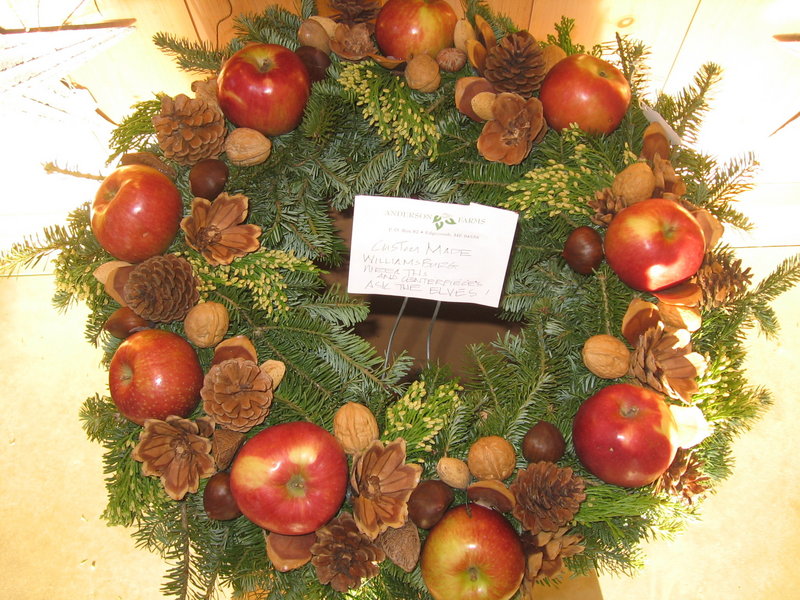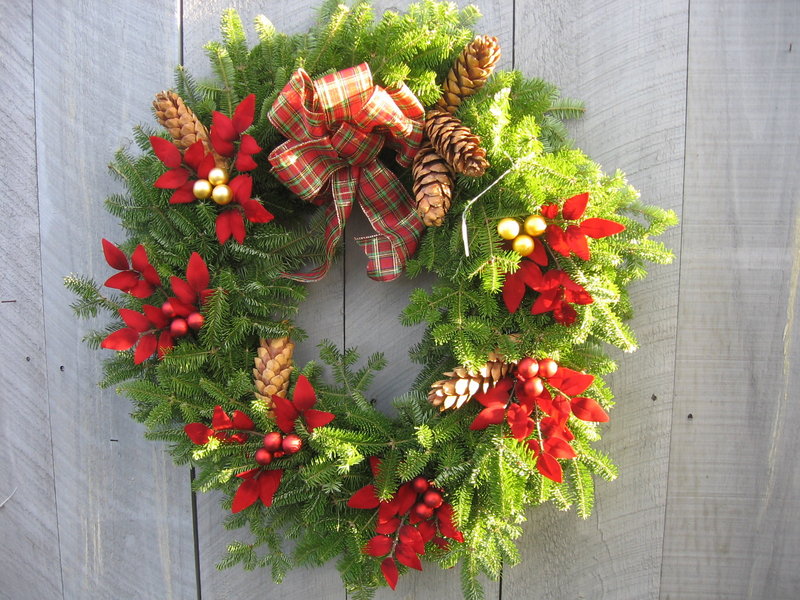Garden greens are a big part of Christmas, thanks to wreaths, garlands, centerpieces and even the tree itself.
And if you have a sizable yard and/or are willing to be a “ditch diver,” it doesn’t cost a lot of money to fill your house with wonderful decorations.
Diane Walden, who with her husband had a nursery in Philadelphia, now does many of the decorations for Coastal Maine Botanical Gardens in Boothbay.
She will present a program on making festive holiday greens at 1 p.m. Saturday at the gardens.
“I’ve always been a firm believer that you don’t have to spend oodles of money to bring the outdoors inside,” Walden said in a recent telephone interview.
“I am not ashamed to say I am something of a ditch diver, stopping by the side of the road with my pruning shears if I see something I like.”
But most people have some evergreens on their own property, and this is a good time to prune their plants and save the greens for use in centerpieces, wreaths and garlands.
Walden said you should wait to prune your Christmas greens until there have been three consecutive nights with temperatures well below freezing, because the cold weather makes the needles stick better. If you spray the greens with an antidessicant such as Wilt Pruf, she said, they will last even longer.
Walden uses all sorts of evergreens, not just balsams. She likes Arborvitae and chamaecyparus because she loves their aroma. White pine adds a soft texture, and hemlock always works well.
But Walden doesn’t use just evergreens. She cuts a lot of ornamental grasses and flower heads that have dried, such as hydrangeas and milkweed pods. And of course, if your evergreens produce cones, you should save those and use them in your decorations.
“You can use them in their natural state, but if you want a more Victorian look, you can cover them with an antique gold spray paint,” Walden said. The antique gold is a little less glossy than some spray paints, and she thinks it looks better.
The simplest decoration to make, she said, is a pendant of greens — tying several branches at the base and putting them on a door or a wall. She makes creating garlands and wreaths sound absolutely easy, but I think I would feel better about it if I saw her demonstrating it in person.
“You make a garland simply by wrapping onto a rope base with handfuls of greens, making a long snake that you can hang from a stairway or run down the center of a table with flowers in the middle of it,” she said.
“They also look good with dried artichokes, clementines or grapes. I’ve used red peppers, but that might be better for the Southwest. I’ve also used pineapple in a centerpiece, because it is a great symbol of hospitality. In this area, the sea captains used to bring them home.”
Walden’s method of attaching greens to a wreath mold or a rope for a garland involves buying green wreath wire at a hardware store or garden center. Wreath wire is similar to florists’ wire, but a little thicker.
You take a handful of greens and hitch them to the rope or wreath mold with the wire, then move down two or three inches and add another handful of greens and go until you’re done.
She said the garlands should last a couple of weeks inside without water, noting that because you have just cut the greens in your yard, they are already fresher than greens cut in Canada or Down East and shipped all over the country.
Walden also discussed Williamsburg wreaths, which are made by attaching fruit to a wreath form. In Maine’s cold weather, you really have to place them inside or on a porch, or the fruit will freeze and go bad too quickly. But once they do go by, she likes to put them outside and watch the animals eat them.
Walden attaches a lot more than traditional holly berries and glass ornaments as decorations to her wreaths. She will use mussel shells, sea grasses and sometimes, if she wants to do something a bit offbeat, plastic lobsters. But you can use whatever fits your taste.
For centerpieces and floor arrangements, you can put the greens and flowers in water or floral foam so they will last even longer.
But for some of those arrangements, if she wants to add some height, Walden will use branches from white birch trees or red-twig dogwoods, which bring a festive air. In an entryway, you can put the arrangement on the floor and have it rise 8 feet to the ceiling.
While she knows barberry and bittersweet are both invasive, Walden likes the screaming orange color of the barberry at this time of year and the berries from the bittersweet.
Tickets to Walden’s program costs $30 for members of the Coastal Maine Botanical Gardens and $37 for nonmembers. They can be purchased at mainegardens.org or at 633-4333, Ext. 101.
OK, NO JUNE 31
I wrote in last week’s column that you should not prune roses after June 31, and several readers told me that June has only 30 days. My fingers got away from me, I fear. You shouldn’t fertilize after July 31.
Tom Atwell has been writing the Maine Gardener column since 2004. He is a freelance writer from Cape Elizabeth and can be contacted at 767-2297 or at:
tomatwell@me.com
Copy the Story Link
Send questions/comments to the editors.




Success. Please wait for the page to reload. If the page does not reload within 5 seconds, please refresh the page.
Enter your email and password to access comments.
Hi, to comment on stories you must . This profile is in addition to your subscription and website login.
Already have a commenting profile? .
Invalid username/password.
Please check your email to confirm and complete your registration.
Only subscribers are eligible to post comments. Please subscribe or login first for digital access. Here’s why.
Use the form below to reset your password. When you've submitted your account email, we will send an email with a reset code.